Special Topics
Start Your Buddhist Cultivation with Regular Practice
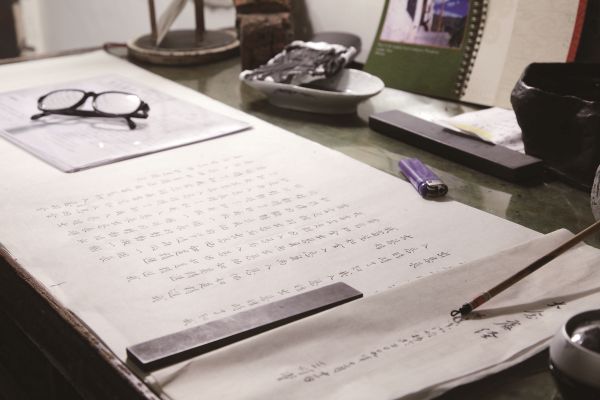 To do regular practice is to set aside a fixed period each day to do the same practice, such as reciting a sutra, sitting in meditation, and prostrating to the Buddha. Regular practice helps us maintain a calm and peaceful body and mind. As a daily reminder, regular practice is the best way for Buddhist practitioners to hone their cultivation.
To do regular practice is to set aside a fixed period each day to do the same practice, such as reciting a sutra, sitting in meditation, and prostrating to the Buddha. Regular practice helps us maintain a calm and peaceful body and mind. As a daily reminder, regular practice is the best way for Buddhist practitioners to hone their cultivation.There are many different kinds of regular practice. Beginners can find the time and arrange the content best suited to their schedules. The point is that the practice needs to be done consistently, and on a daily basis. The following is an introduction to the essence and the procedures of seven kinds of basic Buddhist regular practice, including performing the liturgy, upholding the dharani, prostrating to the Buddha, sitting in meditation, and hand- copying the scriptures.
Morning/ Evening Liturgy Service
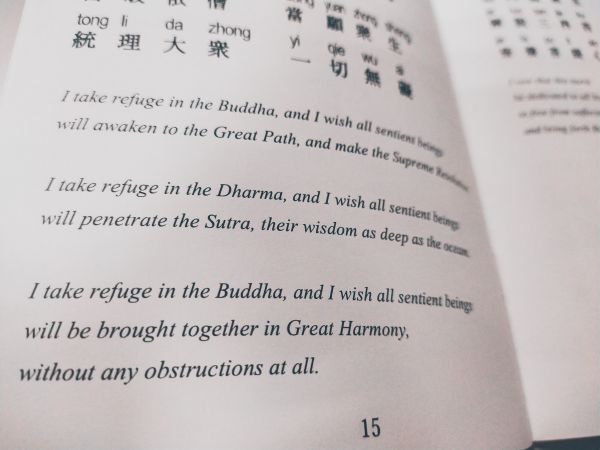 The morning practice is meant for us to start the day by infusing ourselves with positive energy while we feel fresh and awake. The evening practice is intended for us to reflect on our activities of the day and repent, for the purification of our bodily, verbal, and mental actions after a hectic day. The following are suggestions for the time and content of the practice.
The morning practice is meant for us to start the day by infusing ourselves with positive energy while we feel fresh and awake. The evening practice is intended for us to reflect on our activities of the day and repent, for the purification of our bodily, verbal, and mental actions after a hectic day. The following are suggestions for the time and content of the practice.Time for morning practice: after washing yourself and before breakfast.
Time for evening practice: in the late afternoon, after dinner, following a brief rest, and before going to bed.
Venue: in front of the house altar* or find a quiet and well-lit space.
Optional Buddhist items: while Dharma instruments, such as wooden fish (muyu) or hand-bell, are not required for personal practice, a wooden fish can be used on the pretext of not disturbing others.
Prerequisites: If you have a house altar*, make offerings to the Buddha (using a cup of clean water and by burning incense) and prostrate three times, prior to the liturgy practice.
If you don’t have a house altar*, use a Buddhist sutra to represent a Buddha statue. Prior to and after the liturgy, bow and prostrate to the sutra three times.
Content and Procedure: The rituals of your liturgy practice can vary, depending on your available time and preference, as long as the content of your recitation remains the same every day. Before and after the practice, you can pray for benefits for this present life or for future lives. During the recitation, concentrate solely on the recitation, with a non-seeking mind. Generally, the content of morning liturgy practice includes:
Time for evening practice: in the late afternoon, after dinner, following a brief rest, and before going to bed.
Venue: in front of the house altar* or find a quiet and well-lit space.
Optional Buddhist items: while Dharma instruments, such as wooden fish (muyu) or hand-bell, are not required for personal practice, a wooden fish can be used on the pretext of not disturbing others.
Prerequisites: If you have a house altar*, make offerings to the Buddha (using a cup of clean water and by burning incense) and prostrate three times, prior to the liturgy practice.
If you don’t have a house altar*, use a Buddhist sutra to represent a Buddha statue. Prior to and after the liturgy, bow and prostrate to the sutra three times.
Content and Procedure: The rituals of your liturgy practice can vary, depending on your available time and preference, as long as the content of your recitation remains the same every day. Before and after the practice, you can pray for benefits for this present life or for future lives. During the recitation, concentrate solely on the recitation, with a non-seeking mind. Generally, the content of morning liturgy practice includes:
1. Great Compassion Mantra three to seven times,
2. Heart Sutra once,
3. Say "maha-prajna-paramita" (great transcendent wisdom) three times,
4. The name of Amitabha Buddha or Guanyin Bodhisattva 48 or 108 times,
5. Samantabhadra Bodhisattva's Ten Great Vows or the Four Great Vows,
6. The Three Refuges Verse,
7. The Verse of Merit Transfer.
2. Heart Sutra once,
3. Say "maha-prajna-paramita" (great transcendent wisdom) three times,
4. The name of Amitabha Buddha or Guanyin Bodhisattva 48 or 108 times,
5. Samantabhadra Bodhisattva's Ten Great Vows or the Four Great Vows,
6. The Three Refuges Verse,
7. The Verse of Merit Transfer.
While evening liturgy practice includes chanting the following:
1. The Shorter Sukhāvatīvyūha Sūtra (the Amitabha Sutra) or Eighty-eight Buddhas Great Repentance Text once, or Great Compassion Mantra seven times,
2. The Heart Sutra once,
3. The Dharani of Rebirth in the Pure Land three times,
4. The name of Amitabha Buddha or Guanyin Bodhisattva 48 or 108 times,
5. The Four Great Vows,
6. The Samantabhadra Bodhisattva's Verse of Admonition,
7. The Three Refuge Verse,
8. The Verse of Merit Transfer.
2. The Heart Sutra once,
3. The Dharani of Rebirth in the Pure Land three times,
4. The name of Amitabha Buddha or Guanyin Bodhisattva 48 or 108 times,
5. The Four Great Vows,
6. The Samantabhadra Bodhisattva's Verse of Admonition,
7. The Three Refuge Verse,
8. The Verse of Merit Transfer.
If time permits, the liturgy practice can be extended to 45 minutes or one hour by adding the Shurangama Dharani and the Ten Short Mantras to the morning practice and adding the Chapter on Avalokiteshvara Bodhisattva's Universal Gate from the Lotus Sutra or reciting the Great Compassion Mantra 21 or 48 times in the evening liturgy practice. Alternatively, you can do sitting meditation for 20-30 minutes or prostration for a fixed number of times (or a fixed period of time) before the morning liturgy practice and after the evening practice.
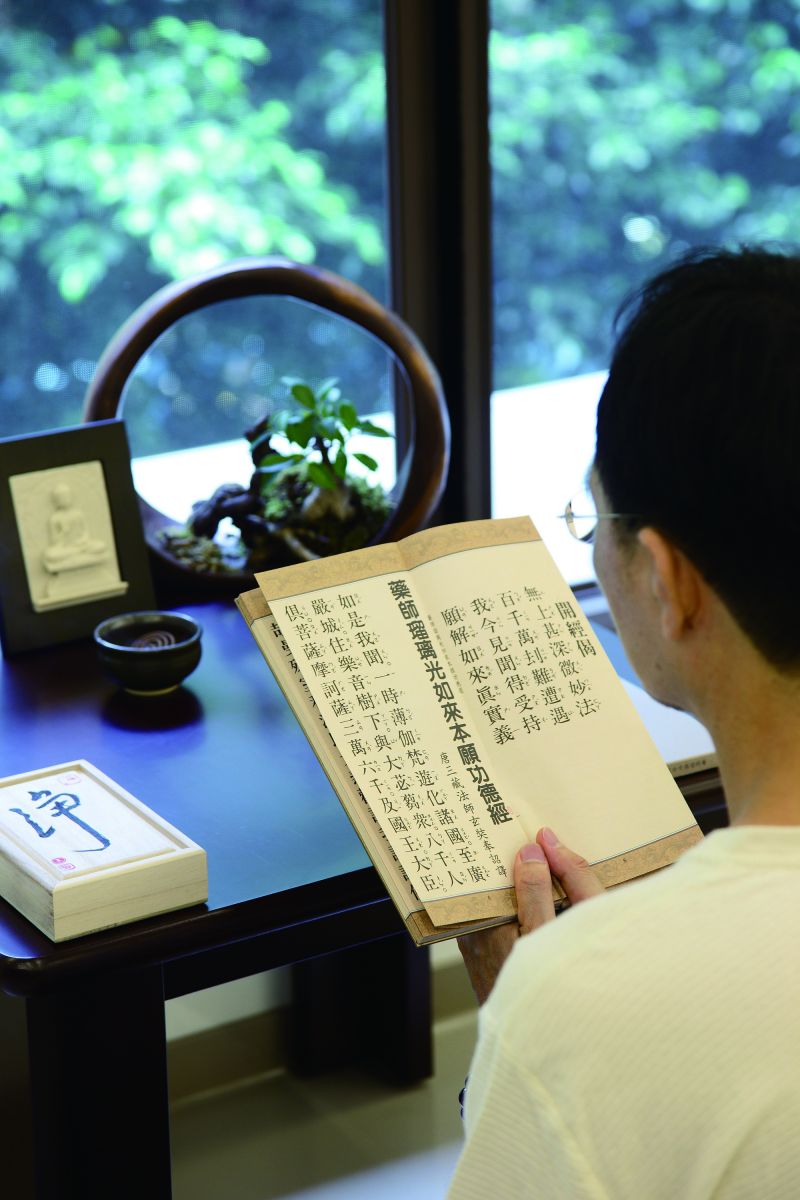 Sutra Recitation
Sutra Recitation
Sutras are a record of the Buddha’s teachings. After the Buddha passed away, his monastic and lay disciples orally transmitted his teachings generation to generation. Hence, recitation became a fundamental way to practice and spread the Buddhist teaching, making it an essential practice for Buddhist beginners.
Many Mahayana sutras mention that sutra recitation provides us with meritorious benefits, such as eradicating disasters, praying for good fortune, and delivering the deceased. However, it is mainly meant for us to penetrate the Buddhist doctrine, illuminate our mind, cultivate samadhi, and promote the Dharma. Some of the most commonly recited sutras are the Heart Sutra, the Chapter on Avalokiteshvara Bodhisattva's Universal Gate from the Lotus Sutra, the Shorter Sukhāvatīvyūha Sūtra, the Diamond Sutra, the Sutra on the Earth-Treasure Bodhisattva's Fundamental Vows, and the Medicine Buddha Sutra. Both the Lotus Sutra and the Avatamsaka Sutra are longer texts which are therefore a suitable choice for practitioners who have more time available.
Many Mahayana sutras mention that sutra recitation provides us with meritorious benefits, such as eradicating disasters, praying for good fortune, and delivering the deceased. However, it is mainly meant for us to penetrate the Buddhist doctrine, illuminate our mind, cultivate samadhi, and promote the Dharma. Some of the most commonly recited sutras are the Heart Sutra, the Chapter on Avalokiteshvara Bodhisattva's Universal Gate from the Lotus Sutra, the Shorter Sukhāvatīvyūha Sūtra, the Diamond Sutra, the Sutra on the Earth-Treasure Bodhisattva's Fundamental Vows, and the Medicine Buddha Sutra. Both the Lotus Sutra and the Avatamsaka Sutra are longer texts which are therefore a suitable choice for practitioners who have more time available.
Time: not limited
Venue: in front of the house, altar, or a quiet and well-lit space.
Optional Dharma Instrument: A wooden fish can be used when two or more people practice recitation. For personal practice, it is actually not necessary.
Prerequisite:
Venue: in front of the house, altar, or a quiet and well-lit space.
Optional Dharma Instrument: A wooden fish can be used when two or more people practice recitation. For personal practice, it is actually not necessary.
Prerequisite:
1. Rinse your mouth, wash your hands, and make yourself tidy before doing the recitation.
2. If you're doing the recitation at a house altar*, set up a reading stand, make offerings to the Buddha with flowers, incense, candles, or fruit, and prostrate three times. Otherwise, spare the offering, simply visualize the Buddha or bodhisattva, and just bow and prostrate three times with the image in mind.
2. If you're doing the recitation at a house altar*, set up a reading stand, make offerings to the Buddha with flowers, incense, candles, or fruit, and prostrate three times. Otherwise, spare the offering, simply visualize the Buddha or bodhisattva, and just bow and prostrate three times with the image in mind.
The Method:
1. Sutra Recitation: Collect your mind and focus wholeheartedly on every single moment of your recitation by attentively hearing the words being read out. Concentrate your mind on the text without contemplating its meaning. Try to recite fluently without making any mistakes. Read and recite the sutra in this way, and naturally you will gain a better understanding of its meaning.
2. Prostration to the Sutra: Make a separate prostration after reciting each word of the sutra. One must recite the title of the sutra, as well as the epithets of the Buddhas and Bodhisattvas who joined the Dharma assembly mentioned in the sutra. For example, when doing prostration to the Lotus Sutra, recite: "Homage to the Lotus Sutra; homage to the Buddhas and Bodhisattvas who joined the Dharma assembly." When the time is up, mark the paragraph where you stopped as a reminder, so that you know where to pick up next time. After the prostration session, remember to close the sutra and put it back in its place.
2. Prostration to the Sutra: Make a separate prostration after reciting each word of the sutra. One must recite the title of the sutra, as well as the epithets of the Buddhas and Bodhisattvas who joined the Dharma assembly mentioned in the sutra. For example, when doing prostration to the Lotus Sutra, recite: "Homage to the Lotus Sutra; homage to the Buddhas and Bodhisattvas who joined the Dharma assembly." When the time is up, mark the paragraph where you stopped as a reminder, so that you know where to pick up next time. After the prostration session, remember to close the sutra and put it back in its place.
Focus on one specific sutra of your choice for your sutra recitation practice, and set a deadline to finish reciting it for a certain number of times. Take the sutra as a mirror to reflect on your bodily and mental actions, as a standard to improve yourself, and as a guideline to practice the Dharma. You can also consider sutra recitation as your mission to promote the Buddha’s teaching.
*An altar facilitates Buddhists to perform Buddhist practices. Buddha statues or images may be placed on the altar.
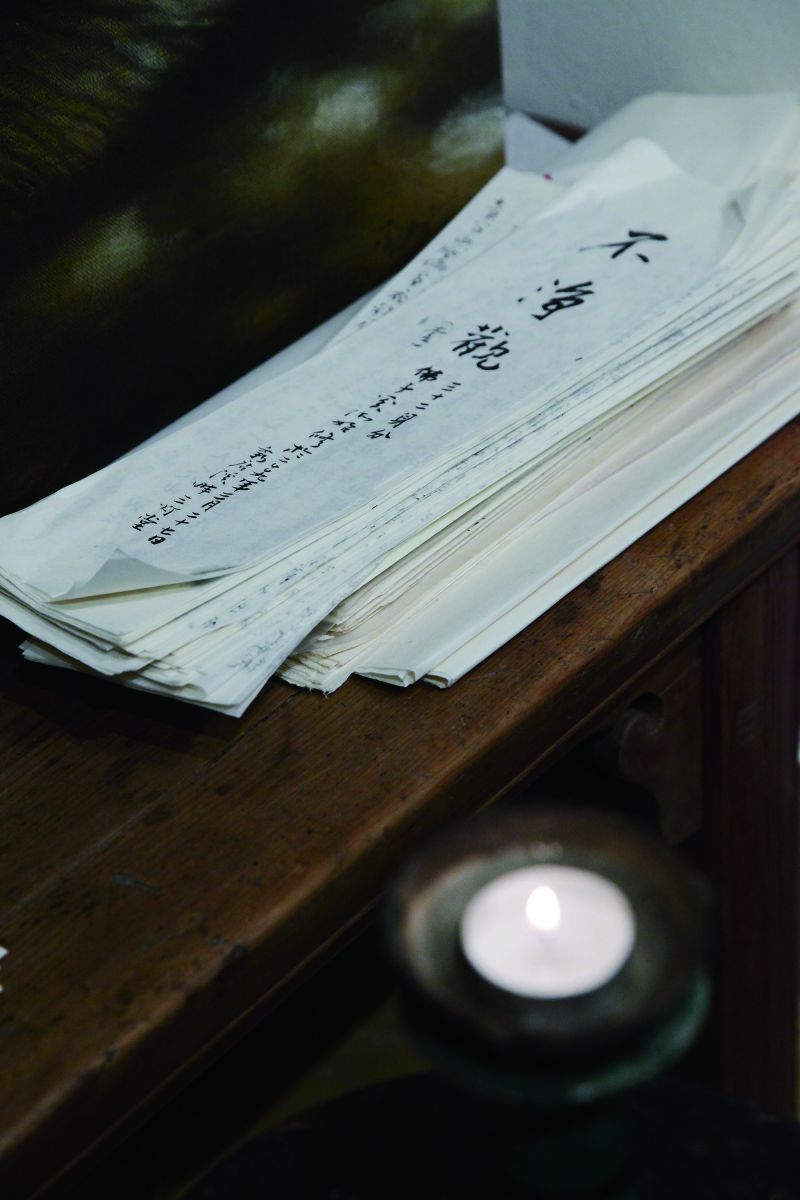 Upholding Mantras
Upholding Mantras
The word Dharani, which is an alternative word for mantra, means "upholding." It refers to "never ceasing to do good deeds" and "avoiding doing bad deeds". In other words, upholding mantras helps us give rise to wholesome thoughts and prevent us from doing unwholesome deeds, in addition to helping us settle our mind.
Because mantras carry many levels of meaning, most mantras are transliterated by their Sanskrit sounds rather than translated by their meanings. Thus, mantra recitation can be regarded as a way to connect and resonate with Buddhas and Bodhisattvas through sounds.
Commonly recited mantras include Great Compassion Mantra, Avalokitesv
Because mantras carry many levels of meaning, most mantras are transliterated by their Sanskrit sounds rather than translated by their meanings. Thus, mantra recitation can be regarded as a way to connect and resonate with Buddhas and Bodhisattvas through sounds.
Commonly recited mantras include Great Compassion Mantra, Avalokitesv
Time: not confined
Place: not confined
Equipments: A string of mala beads or a counter
Preparation: Relax the body and the mind, and settle the mind in the present moment.
Method: When we are chanting mantras, align our mental, verbal, and physical actions with one another. It means that the mind clearly knows what we are reciting and what we hear. Continuously recite mantras in this way, and we will find the practice beneficial for stabilizing g the mind.
Place: not confined
Equipments: A string of mala beads or a counter
Preparation: Relax the body and the mind, and settle the mind in the present moment.
Method: When we are chanting mantras, align our mental, verbal, and physical actions with one another. It means that the mind clearly knows what we are reciting and what we hear. Continuously recite mantras in this way, and we will find the practice beneficial for stabilizing g the mind.
Not understanding the meaning of the mantra or being able to pronounce the syllables correctly, doesn't diminish the merit of the practice. But to conduct mantra "upholding", we should chant it consistently for a fixed number of times or a fixed duration every day. Only by reciting single-mindedly with sincerity to the point where no wandering thoughts arise, can we feel profound inner peace and ease.
In addition, mantras encapsulate Buddhas' and Bodhisattvas' merits from their practice and attainment, as well as the power of their vows and blessings. When we recite mantras as our regular practice, we enter into the essence of their unique practices. As we repeatedly recite mantras wholeheartedly, every recitation will be an earnest prayer that connects directly with Buddhas' and Bodhisattvas' original vows.
Buddha's Name Recitation
Buddha Name Recitation refers to reciting any of the names of the Buddhas or Bodhisattvas, not limited to Amitabha's name. Some practitioners pray to be reborn in Buddha's Pure Land by reciting Buddha name as their daily practice. Yet, the ultimate goal of the practice is to purify our mind. Wandering thoughts resulting from our desire, anger, and ignorance are hard to avoid; however, the more we hold our mind to Buddha's name by reciting and listening mindfully with clear awareness, the fewer vexations there will be in our mind.
Time: not confined
Place: not confined
Equipment: A counter or mala beads.
Preparation: Relax the body and mind, not thinking about things in the past or future. Place the awareness on the present moment.
Methods
1. Silent Recitation: As the fingers slide from bead to bead, repeatedly recite the Buddha's name. The mala beads are used to remind us to recite continuously and, furthermore, to purify our bodily, verbal, and mental activities.
2. Reciting Out Loud: Wandering thoughts will be reduced when we recite out loud. While reciting, keep the eyes open and allow the breath to be smooth. Recite out loud using the force of thethe abdomen, continuously follow the sound of the recitation, and focus your attention on the Buddha's name.
3. Recitation-counting: Silently count a number in mind at the end of each recitation of Buddha's name. For example, "Amitabha Buddha one".. "Amitabha Buddha two…; after reaching "Amitabha Buddha ten", start over from“Amitabha Buddha one". Start again from the first recitation when we find ourselves in wandering thoughts and forget the next number to count, or count over ten. With clear awareness, recite, remember, and listen to the recitation of every word. Repeatedly reciting in this way, our scattered mind will turn into concentrated mind.
Place: not confined
Equipment: A counter or mala beads.
Preparation: Relax the body and mind, not thinking about things in the past or future. Place the awareness on the present moment.
Methods
1. Silent Recitation: As the fingers slide from bead to bead, repeatedly recite the Buddha's name. The mala beads are used to remind us to recite continuously and, furthermore, to purify our bodily, verbal, and mental activities.
2. Reciting Out Loud: Wandering thoughts will be reduced when we recite out loud. While reciting, keep the eyes open and allow the breath to be smooth. Recite out loud using the force of thethe abdomen, continuously follow the sound of the recitation, and focus your attention on the Buddha's name.
3. Recitation-counting: Silently count a number in mind at the end of each recitation of Buddha's name. For example, "Amitabha Buddha one".. "Amitabha Buddha two…; after reaching "Amitabha Buddha ten", start over from“Amitabha Buddha one". Start again from the first recitation when we find ourselves in wandering thoughts and forget the next number to count, or count over ten. With clear awareness, recite, remember, and listen to the recitation of every word. Repeatedly reciting in this way, our scattered mind will turn into concentrated mind.
We can recite Buddha's names wherever we are. As long as our minds are settled, we can recite anywhere and at any time. And we can also set a certain number of times for ourselves to recite. For example, we can set time to recite Buddha's name three or ten thousand times. Counting the recitations can motivate and encourage us to complete our daily regular practice. Every day after finishing the practice, we can transfer merit to our families, friends, and sentient beings in all realms.
Prostration
To prostrate is to sincerely pay respect to Buddha or Bodhisattva or Buddhist sutras. Many people prostrate to pray for merits, longevity, or wisdom. However, the main functions of prostration are 1) to repent (Repentance Prostration); 2) to cultivate gratitude (Gratitude Prostration); and 3) to practice meditative concentration (No-form Prostration).
Time: not confined
Place: At a quiet, clean, and bright area, or in front of the Buddhist altar at home.
Equipment: A sitting or prostrating mat and a counter.
Preparation: Relax the body and the mind. Stand with the head and the upper body in the upright position. Join palms, and look at the tips of the fingers.
Method: When we are prostrating, we don't need to prostrate toward a certain direction or think about the particular Buddha statue to which we are prostrating ; the only thing we pay attention to is the movement and sensation of the whole body. Prostrate as slowly as possible. Be concentrated, relaxed, and fully aware of the body prostrating smoothly.
Place: At a quiet, clean, and bright area, or in front of the Buddhist altar at home.
Equipment: A sitting or prostrating mat and a counter.
Preparation: Relax the body and the mind. Stand with the head and the upper body in the upright position. Join palms, and look at the tips of the fingers.
Method: When we are prostrating, we don't need to prostrate toward a certain direction or think about the particular Buddha statue to which we are prostrating ; the only thing we pay attention to is the movement and sensation of the whole body. Prostrate as slowly as possible. Be concentrated, relaxed, and fully aware of the body prostrating smoothly.
1. As we stoop down, the head and the upper body remain straight; don’t slouch. Bend the knees and let the forehead touch the floor. Be aware of the movements of the palms, thighs, and legs.
2. While we are prostrating, relax the muscles in the whole body, breathe smoothly, and use the least of effort.
3. Slowly stand up like a sponge regaining its shape. Feel the body as light as a cloud in the sky.
2. While we are prostrating, relax the muscles in the whole body, breathe smoothly, and use the least of effort.
3. Slowly stand up like a sponge regaining its shape. Feel the body as light as a cloud in the sky.
Repentance Prostration is the act of repenting the behaviors for which we feel shame. Every prostration follows a mindful recitation of either "I am ashamed, thus I repent" or, conversely, the Repentance Verse. By practicing repentance, we honestly face what we have done in the past (causes) and accept our current situations (effects). In this way, we will naturally have clarity, peace, and joy in our mind.
No-form Prostration is the act of prostrating without any thoughts—that is, only focusing on the movements of the body. To practice prostration regularly is the best way to harmonize our body and calm our mind.
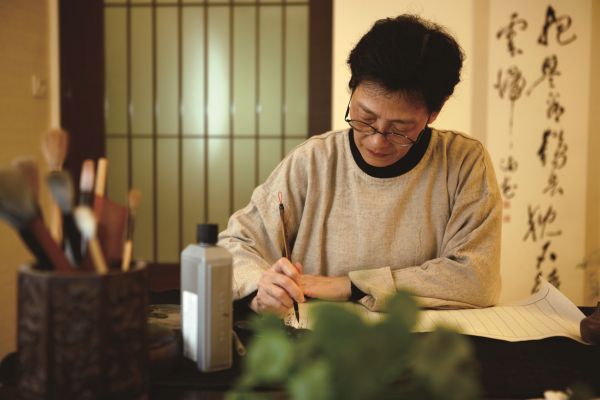 Chaojing (Sutra Calligraphy)
Chaojing (Sutra Calligraphy)
Many Mahayana Buddhist sutras mention the benefits of Chaojing (Sutra Calligraphy) and how this practice method was encouraged by Buddhas and Boddhisattvas. In addition to promoting and sharing Buddha-dharma with more people, Chaojing can also help us memorize and understand the content of sutras, which leads to the saying “making one copy is more effective than reading it ten times”. Besides, Chaojing is also a way to practice meditation.
Time: not confined
Place: not confined however it is better to be at a clean and bright place.
Writing Stationary: Blank paper or Chaojing notebook; a pen of any kind, can be a bullet pen, fountain pen and brush pen, etc.
Procedure:
Place: not confined however it is better to be at a clean and bright place.
Writing Stationary: Blank paper or Chaojing notebook; a pen of any kind, can be a bullet pen, fountain pen and brush pen, etc.
Procedure:
1. Before doing Calligraphy, please wash the hands beforehand and prostrate three times for, it is said, "When we read Buddhist sutras, we see the Dharma, and thus we see the Buddha."
2. Make the writing as neat as possible. It cannot be illegible and sloppy.
3. Sit upright and still the body and mind when making sutras Calligraphy.
4. Once we've found mistakes in the writings, we ought to start over again. If we don't want to start over, we can make a dot at the right side of the wrong word and write the correction next to it, without using correction fluid. If there are missing words, insert them along the side.
5. Which sutra to calligraphy and how many chapters to work on per day depends on each person's time, availability, and preference.
2. Make the writing as neat as possible. It cannot be illegible and sloppy.
3. Sit upright and still the body and mind when making sutras Calligraphy.
4. Once we've found mistakes in the writings, we ought to start over again. If we don't want to start over, we can make a dot at the right side of the wrong word and write the correction next to it, without using correction fluid. If there are missing words, insert them along the side.
5. Which sutra to calligraphy and how many chapters to work on per day depends on each person's time, availability, and preference.
After finishing a copy of a sutra, prostrate in front of the Buddha statue three times, sincerely transfer the merit, and make vows followed by another three prostrations. We can keep the copied scriptures we make as a souvenir or recycle it. If the handwriting is beautiful, we can share it with others to form positive connections, thereby helping others cultivate faith and raise their interest in Buddha's teachings.
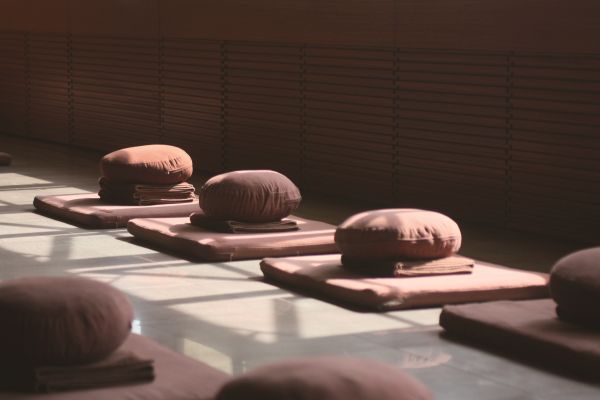 Sitting Meditation
Sitting Meditation
Sitting meditation is the foundation of Chan practice. Before we start to practice meditation at home, we need to learn the correct methods of meditation which give us healthy and safe meditation experience. Besides, when we have any questions during our practice, we need to ask experienced teachers for help so that the practice can be more beneficial to us.
Time: The best time to meditate is when we have a clear mind and sufficient energy, such as between showers in the morning and breakfast time, or between cleansings in the late evening and bedtime.
Place: A quiet and clean place
Equipment: A sitting mat, a sitting cushion, and a tower that can cover the legs
Prerequisites: It is better for us to do some stretching exercises to relax our muscles, followed by the morning meditation after waking up. Before sitting in stillness, we have to do head exercises and take three deep breaths. Head exercises are used to reduce the blood in the brain so that we will have less wandering thoughts and a clear, calm mind. Three deep breaths help expel stale air in the body and inhale fresh air to activate blood circulation. * To see the complete introduction and guidance to sitting meditation, please refer to the videos of "Chan Hall in My Home" and the articles of "Chan Meditation Roadmap".
Methods:
Place: A quiet and clean place
Equipment: A sitting mat, a sitting cushion, and a tower that can cover the legs
Prerequisites: It is better for us to do some stretching exercises to relax our muscles, followed by the morning meditation after waking up. Before sitting in stillness, we have to do head exercises and take three deep breaths. Head exercises are used to reduce the blood in the brain so that we will have less wandering thoughts and a clear, calm mind. Three deep breaths help expel stale air in the body and inhale fresh air to activate blood circulation. * To see the complete introduction and guidance to sitting meditation, please refer to the videos of "Chan Hall in My Home" and the articles of "Chan Meditation Roadmap".
Methods:
* To see the complete introduction and guidance to sitting meditation, please refer to the videos "Chan Hall in My Home" and the articles of "Chan Meditation Roadmap".
If we do sitting meditation during a fixed period of time every day, with each practice lasting for 15 to 20 minutes (or even half hour to one hour), our bodies and minds will cultivate the habit to conduct this regular practice when the time comes. We may feel drowsy and have lots of wandering thoughts in the beginning, but as we repeatedly remind ourselves to focus on the meditation, our scattered minds will gradually become more focused, and, finally, unified.
Resource:
Issue 326 of Life Magazine, Dharma Drum Publishing Corporation
Text: Editorial Team of Dharma Drum Publishing Corporation
Translation: Hsiao Chen-an
Editing: Shu-jen Yeh, Una Yang, Chang Chia-Cheng (張家誠), Keith Brown
Extended Reading:
Carry out Daily Dharma Practice However Busy We Are
What Introductory Practices are Available for Working People?
